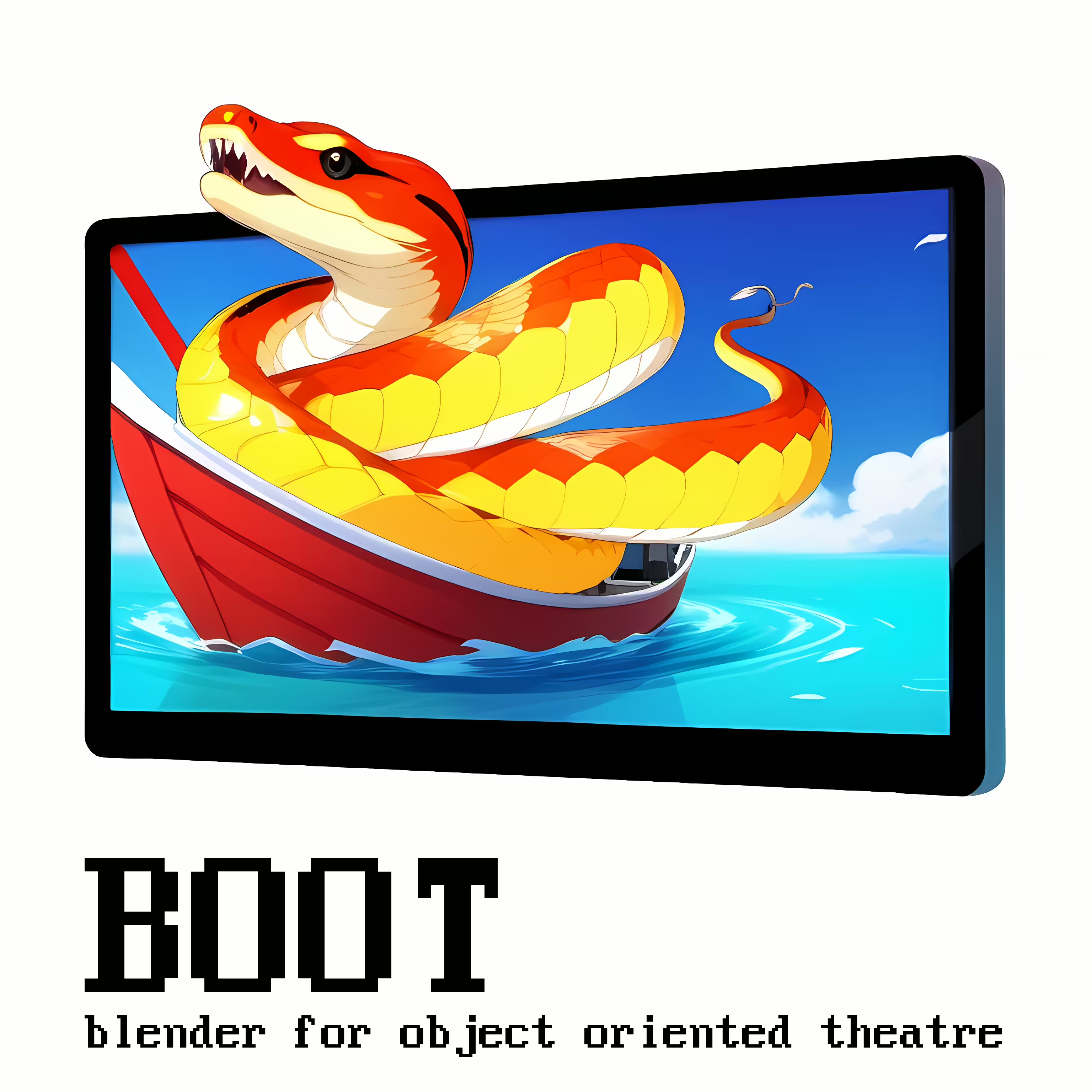
A pipeline to orchestrate physical automated object theater, using Blender
This project enables you to plan, edit, export and perform automated object- and puppet theatre by creating a 1:1 virtual replica of the physical installation. You can thus benefit from having a single source of truth for all aspects of the play while enjoying the flexibility and expressivity of Blender for editing arrangement, acting, audio and everything else. During editing you can preview the entire¹ play virtually before exporting it to the physical environment.
Missing and subject to change.
Currently:
- SBC means single board embedded computer with GPIO, such as a Raspberry Pi²
- client refers to a SBC used for controlling all physical actions (movements, audio, ...)
The project is based on recent-ish Python 3 and recent-ish Blender 3. A series of native packages are expected to be installed and will be documented here eventually.
Each submodule should have its own requirements.txt, but so far they are all missing.
Some dependencies have been copied from legacy codebases instead of being installed.
Create a config/config.json locally on all devices, currently undocumented.
This file contains all environment information about the machine where Blender is used to edit scenes and the embedded computer (with GPIO) used to perform the final play.
Copy the code from blender-in-editor/blender-ui.py into a script in your Blender file and execute it.
You might need to adjust the relative path to this project at the top of the file.
Digital (Blender) entities are mapped to physical objects (e.g. motors) and certain functionalities via custom properties. To add a custom property go the Object properties tab, with the respective name (as documented below for each feature) and a unique ID or a parameter as value. Annotated objects are auto-discovered based on these properties and – if applicable – included in the export.
To control a physical servo based on an objects 1 dimensional rotation, add a servo property with a unique ID.
The dimension is auto-discovered.
To generate digital movements from a recorded audio file use the bake property with an audio channel
(from the Sequence) as argument (value).
This digital movement can be passed to a physical object by adding more properties to the same object.
The current animation range is respected and normalized, i.e. the exported scene always starts at time 0.
Adding text strips to the sequence allow you to trigger a variety of scriptable effects on the client.
A trigger consists of a type. It is optionally followed by a colon followed by a an expression. If there is an expression, it can optionally be followed by a semicolon and one or more semicolon-separated expression arguments. The expression arguments do not have a standardized format. The separators cannot be escaped.
Most triggers activate on their starting frame and have no concept of length.
Example:
logic:wait_for_sound;goto=keep-pressed-1
Currently supported types:
hardware:execute arbitrary code from the client's hardware package
(it really is handled witheval(f"self._hardware.{expression}"))midi:triggers MIDI files by name (without extension)marker:marks a frame, so that it can be jumped to by namelogic:triggers one of a set of predefined, hard-coded state transitions (such as jumping to a marked frame based on a condition, as in the above example)mute/unmutedon't play upcoming sound files (or revert)log:print the expression to STDOUT
Unknown types result in a printed warning.
Audio channel number and layout is currently hardcoded to 3 mono channels in the sequence exported as three stereo channels, organized as 8× mono in one audiofile per chunk. (Audio chunking not documented yet.)
- Create a Blender scene replicating your physical installation (or vice versa, you can use Blender to plan your installation and then build it physically later)
- Add the Blender script within the Blender UI (see above) and execute it once
- Add custom properties to some objects (see above) and keyframe their movement (if applicable)
- Add a sequence with:
- text strips for events and transition logic
- audio
- Hit the "Render & upload" button to transfer audio & movement to the "client" SBC
- This step will "bake" audio-based mouth movements – use the "Render" button to bake without uploading
- Press play in your physical setup or from the Blender UI to view your physical play
The relative path from the Blender file to the sourcecode root is set at the top of blender-in-editor/blender-ui.py (
see above). The default layout assumed is:
blender-files/
blender-file.blend
boot/
... (this repo)
In the config the absolute paths and subfolder names for various media types can be set. Currently it's rather chaotic and non-standardized, so below is a documentation of something that worked, not how it should be:
boot/
... (this repo)
render/ (absolute path in config)
audio/ (not sure where this is configured?)
music/ (dirname in config)
midi/ (absolute path in config)
Currently all physical actions must be controlled from a single SBC. Audio is played through a single 8-channel soundcard. Servos are the only motor type supported. All triggers/effects are hardcoded.
This will change in the future to a network of SBCs with one of them acting as a centralised "conductor". Audio layout will be configurable and distributed. Triggers and effects will be plugin based.
None that I know of – if you find any please let me know!
¹ Well, mostly. If you use logic and transitions that depend on sensors / physical circumstances or execute code
snippets this will not hold. Stubbing is planned, but not yet implemented.
²
Consider boycotting Raspberry Pi and using an alternative board